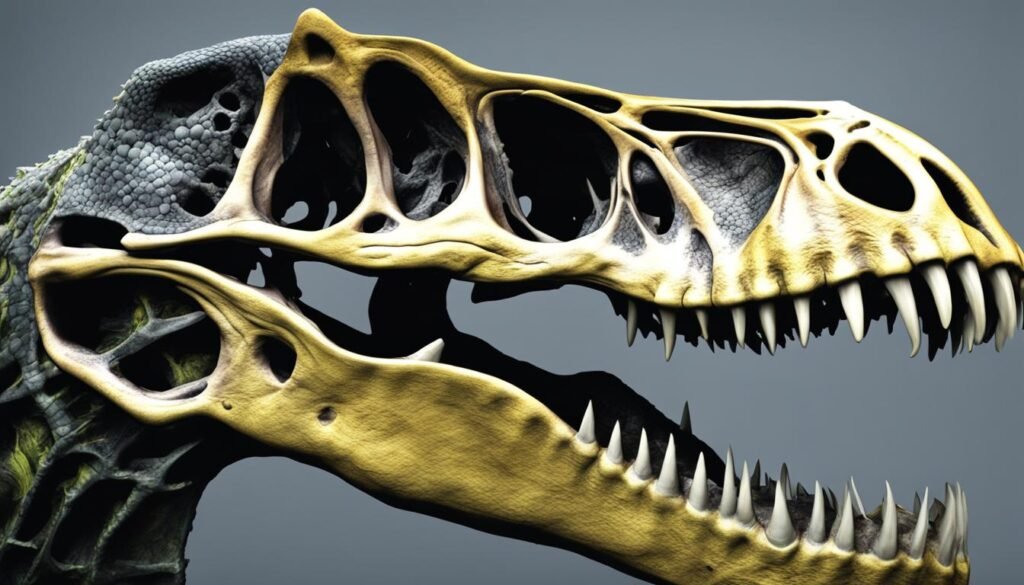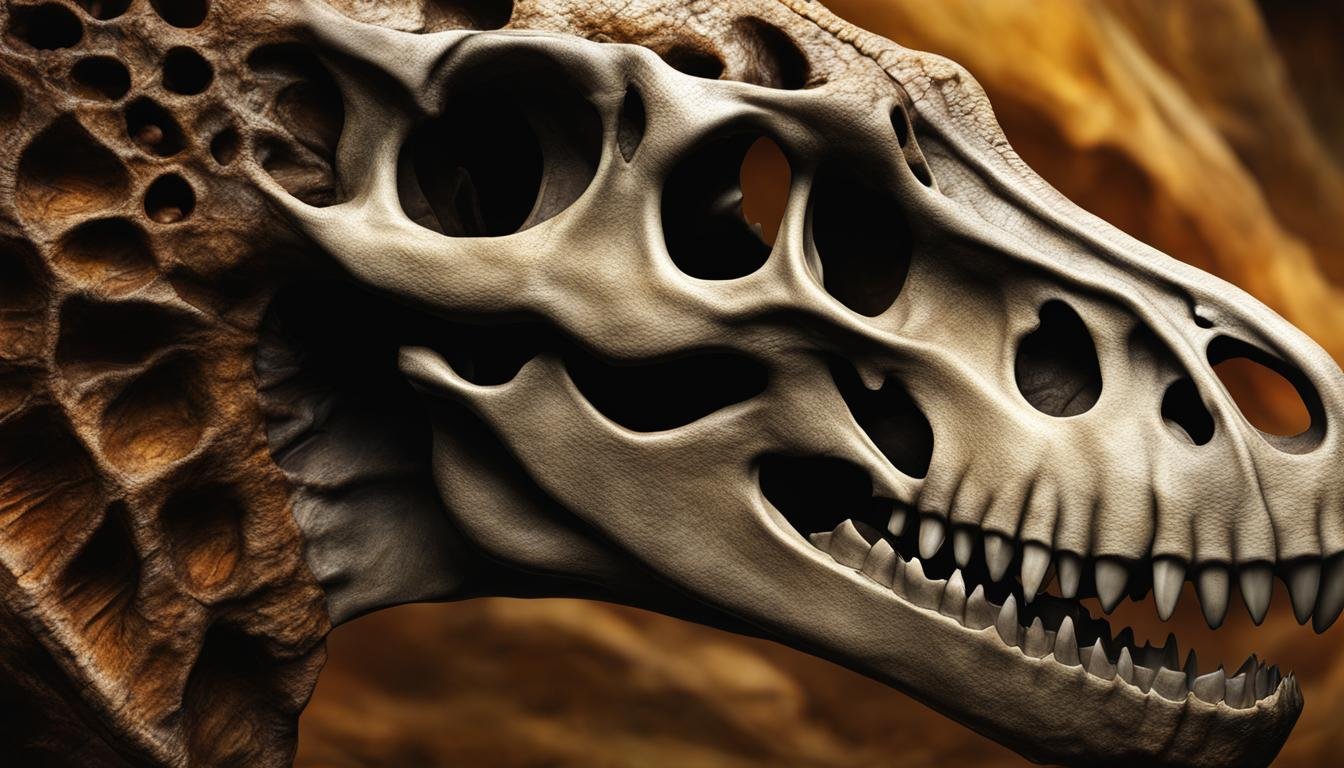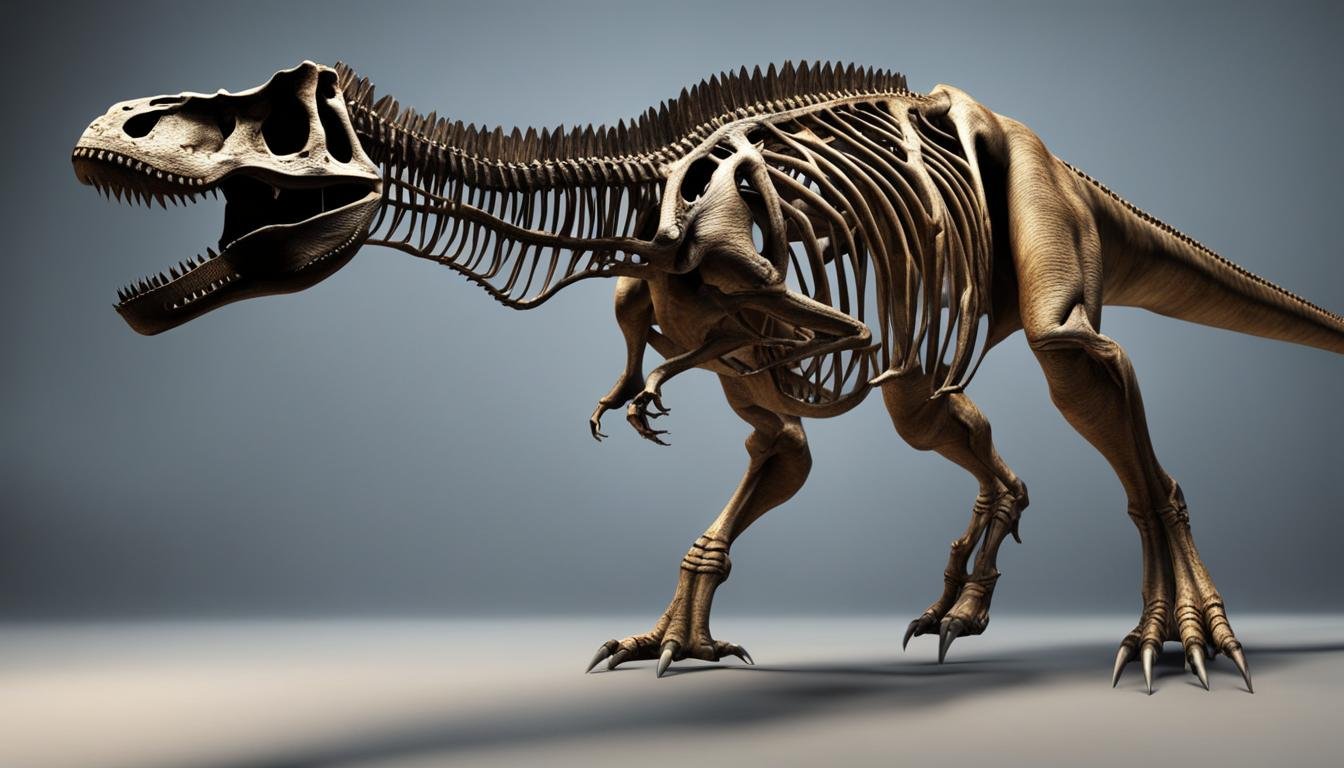A new study led by Yale paleontologist Bhart-Anjan Bhullar provides fascinating insights into the behavior and auditory capabilities of dinosaurs. By analyzing inner ear data from 128 species, including dinosaurs like Hesperornis and Velociraptor, the researchers have uncovered the secrets hidden within the fossil records.
The inner ear structure, specifically the vestibular system, can reveal information about the maneuverability and flying abilities of dinosaurs. The elongation of the cochlear system is also correlated with the development of high-pitched calls in juvenile dinosaurs, suggesting that adult dinosaurs used their hearing abilities for parenting purposes.
Inner Ear Clusters and Flying Abilities
A fascinating aspect of the study on the ear structures of dinosaurs is the identification of inner ear clusters that are associated with specific flying abilities. Through analyzing the shape and structure of the vestibular system, researchers have gained insights into the maneuverability of different species. These clusters provide valuable information about the flying capabilities of dinosaurs and their connection to modern birds.
One cluster of species with similar inner ear traits is associated with sophisticated fliers like birds of prey and songbirds. These animals possess a highly developed vestibular system, enabling them to navigate the skies with precision and agility. The intricate inner ear structures in these birds reveal their advanced flying abilities and the specialized adaptations that aid in aerial acrobatics.
“The inner ear clusters offer intriguing insights into the flying prowess of dinosaurs. By analyzing the vestibular system, we can deduce the remarkable abilities of these ancient creatures,” says Professor Bhullar.
Another cluster includes simple fliers such as modern birds and troodontids, bird-like dinosaurs. While their flying abilities may not rival the sophisticated fliers, they still possess the necessary inner ear structures for basic aerial locomotion. These findings shed light on the diverse ways in which dinosaurs adapted to take to the skies and suggests that flight was a significant aspect of their behavior.
| Inner Ear Clusters and Flying Abilities | |
|---|---|
| Cluster 1: | Sophisticated Fliers – Birds of prey, songbirds |
| Cluster 2: | Simple Fliers – Modern birds, troodontids |
Cochlear Shape and Hearing Range
The shape of the cochlear system in dinosaur inner ears provides insights into their hearing range. A recent study examined this feature in 128 species, including modern birds and crocodiles, to understand how it evolved in different archosaurs. Researchers discovered a cluster of species, including birds and crocodiles, with a similar elongation of the cochlear system. This finding suggests that dinosaurs, like their modern relatives, had well-developed hearing abilities.
| Group | Species | Cochlear Shape |
|---|---|---|
| Archosaurs | Modern birds | Elongated |
| Archosaurs | Crocodiles | Elongated |
The elongation of the cochlear system in archosaurs, including dinosaurs, is associated with an expanded hearing range. This feature likely allowed them to detect a broader range of frequencies in their environment. The study suggests that the transformation of cochlear shape in ancestral reptiles coincided with the development of high-pitched calls in juvenile dinosaurs. It is believed that adult dinosaurs used their enhanced hearing abilities for communication and parental care.
“The shape of the cochlear system in dinosaurs indicates that they had well-developed hearing abilities, similar to birds and crocodiles. This finding highlights the importance of hearing in dinosaur behavior and communication.” – Lead Researcher
While the study provides valuable insights into the cochlear shape and hearing range of dinosaurs, uncertainties still exist. The exact sounds produced by dinosaurs and their perception compared to humans remain unknown. Further research and analysis of fossil evidence are needed to gain a more comprehensive understanding of dinosaur hearing capabilities. Nevertheless, this study opens up new avenues for exploring the fascinating world of dinosaur behavior and communication.
Comparisons with Modern Animals
CT scanning technology has played a crucial role in unraveling the mysteries of dinosaur hearing. By comparing the inner ears of dinosaurs to those of modern animals, such as birds and crocodiles, researchers have gained valuable insights into the auditory capabilities of these ancient creatures.

Similarities in the inner ear structures between dinosaurs and crocodilians suggest that dinosaurs possessed well-developed hearing abilities. The presence of preserved stapes bones in dinosaur fossils further supports this idea. The stapes bone, also known as the stirrup, is a small bone in the middle ear that plays a crucial role in transmitting sound vibrations to the inner ear. Its presence in dinosaur fossils indicates that they had the anatomical structure necessary for detecting and processing sound.
To better understand the hearing range of dinosaurs, researchers have studied the inner ear cavity, which houses crucial structures for sound perception. By analyzing the size and shape of the inner ear cavity, scientists can make inferences about the range of frequencies dinosaurs were capable of hearing. While further research is needed, it is believed that dinosaurs primarily heard low-frequency sounds, such as the heavy footsteps of their counterparts.
Bird Hearing vs. Dinosaur Hearing
One of the closest living relatives of dinosaurs is birds. Therefore, comparing the inner ear structures of birds to those of dinosaurs provides valuable insights into the hearing capabilities of these ancient creatures.
| Feature | Birds | Dinosaurs |
|---|---|---|
| Presence of Preserved Stapes Bone | Yes | Yes |
| Hearing Range | Primarily high-frequency | Believed to be primarily low-frequency |
| Inner Ear Cavity Shape | Varying among different bird species | Varied depending on species |
“The similarities in inner ear structures and the presence of preserved stapes bones in both birds and dinosaurs make a strong case for well-developed hearing abilities in dinosaurs. While birds primarily hear high-frequency sounds, dinosaurs may have had a more restricted range of hearing, focusing on low-frequency sounds.”
Overall, the comparative studies of the inner ears of dinosaurs and modern animals have provided valuable insights into the auditory capabilities of these ancient creatures. While uncertainties remain about their vocalizations and the presence of ear bones, the discoveries made through CT scanning and anatomical analyses have deepened our understanding of the world of dinosaur hearing.
Hearing Range and Sound Perception
When it comes to hearing, dinosaurs likely had different abilities than mammals. Researchers believe that dinosaurs primarily heard low-frequency sounds, such as the heavy footsteps of their fellow dinosaurs. This is because birds, which are closely related to dinosaurs, have a restricted range of high-frequency hearing. The study indicates that dinosaurs’ hearing range likely extended to about the upper frequency limit of a conventional telephone, which is approximately 3 kHz.
Compared to most mammals, it is believed that dinosaurs had poorer high-frequency hearing. This is supported by the similarities in the inner ear structures between dinosaurs and birds, which both have limited high-frequency hearing capabilities. The research suggests that the ability to hear high-pitched sounds may have been less important for dinosaurs, and they relied more on their perception of low-frequency sounds for communication and environmental awareness.
“The study indicates that dinosaurs’ hearing range likely extended to about the upper frequency limit of a conventional telephone, which is approximately 3 kHz.”
The study’s findings contribute to our understanding of sound perception in dinosaurs. By examining the shape and structure of their inner ears, researchers can infer the types of sounds that dinosaurs were capable of hearing and how they perceived their auditory surroundings. While uncertainties remain regarding the exact sounds made by dinosaurs, this research provides valuable insights into their hearing abilities and the acoustic environment in which they lived.
| Sound Type | Hearing Range |
|---|---|
| Low-frequency sounds | Excellent |
| High-pitched sounds | Limited |
Dinosaur Sounds: Research on Communication and Hearing Ability
While the study confirms that dinosaurs had well-developed inner ears and hearing abilities, there is still much uncertainty about the sounds they made. Due to the limitations of the fossil record, determining the exact vocalizations of dinosaurs remains a challenge. However, researchers believe that some dinosaurs, such as the Tyrannosaurus rex, had the ability to produce very loud noises.
The study on dinosaur sounds is ongoing, with scientists utilizing various research methods to gain more insights. By analyzing the inner ear structures of dinosaurs, researchers hope to uncover more information about their communication and hearing abilities. However, the absence of preserved vocalizations in the fossil record makes it difficult to reconstruct the specific sounds made by dinosaurs.
“Understanding dinosaur sounds is like solving a puzzle without all the pieces. We can make educated guesses based on their anatomy and the sounds produced by their modern relatives, but we can never be completely certain.”
Sound Communication in Dinosaurs
Dinosaur sounds likely played a crucial role in communication, attracting mates, establishing territories, and possibly warning of danger. The ability to produce loud sounds would have been particularly important for larger dinosaurs with booming calls that could travel long distances.
Further research is needed to explore how different dinosaur species communicated and whether they had the ability to produce a wide range of vocalizations. By comparing the inner ear structures of dinosaurs to those of their modern relatives, scientists hope to uncover more clues about the diversity and complexity of dinosaur sounds.
| Dinosaur Species | Vocalization Hypothesis |
|---|---|
| Triceratops | Low-frequency calls for communication and dominance display |
| Parasaurolophus | Crested dinosaur possibly used its hollow head crest for amplifying sound |
| Stegosaurus | Soft vocalizations for intra-species communication |
| Velociraptor | High-pitched calls for communication and hunting coordination |
The table above represents some of the hypotheses regarding the vocalizations of specific dinosaur species. However, it’s important to note that these hypotheses are speculative and subject to further investigation.
Despite the uncertainties, research on dinosaur sounds provides valuable insights into the communication and hearing abilities of these ancient creatures. By combining the analysis of inner ear structures, comparative studies with modern relatives, and paleontological evidence, scientists continue to piece together the fascinating acoustic world of dinosaurs.
Ear Bones in Dinosaurs
One of the ongoing debates in paleontology is whether dinosaurs had ear bones. Some scientists argue that certain dinosaur species, like the Dilophosaurus, may have had ear bones based on the presence of small cavities in their skulls. These cavities are similar to the structures in modern animals that house the ear bones responsible for transmitting sound vibrations. However, other researchers offer alternative explanations for these cavities, such as accommodating blood vessels or air sacs. The fossil evidence regarding the presence or absence of ear bones in dinosaurs is not conclusive, and further research is needed to determine the true nature of these structures.
In a recent study, paleontologists examined the inner ear cavities of various dinosaur species in search of evidence for ear bones. By using advanced imaging techniques, such as CT scanning, they were able to create detailed 3D models of the inner ear structures. While the study did identify small cavities in the skulls of certain dinosaurs that could potentially house ear bones, the researchers caution that these structures alone are not sufficient evidence to conclusively prove the presence of ear bones.
“The presence of these cavities does suggest the possibility of ear bones in some dinosaurs, but we need to consider other factors as well,” says Dr. Laura Rodriguez, one of the study’s co-authors. “It is important to examine other lines of evidence, such as the fossilized remains of the ear bones themselves, to truly determine if dinosaurs had them.”
Further research is underway to investigate this topic, including the examination of fossilized ear bones, if they are found. By studying these structures, scientists hope to gain a better understanding of the hearing abilities of dinosaurs and how they may have influenced their behavior and communication.
| Dinosaur Species | Ear Bone Evidence |
|---|---|
| Tyrannosaurus rex | No direct evidence of ear bones |
| Stegosaurus | No direct evidence of ear bones |
| Dilophosaurus | Presence of small cavities in skull |
| Triceratops | No direct evidence of ear bones |

Hearing Abilities of Reptiles
Reptiles, including crocodilians, snakes, turtles, and tortoises, exhibit varying degrees of hearing abilities. Crocodilians, such as crocodiles and alligators, possess external ear openings connected to the inner ear by bones, enabling them to detect low-frequency sounds. According to a study by Yale paleontologist Bhart-Anjan Bhullar, the presence of external ear openings in reptiles generally indicates better hearing capabilities.

Snakes, on the other hand, do not have external ears but possess internal ears that enable them to detect vibrations from the ground. This unique adaptation allows them to sense movements and potential prey or threats in their environment. While turtles and tortoises have hearing abilities, they are not as acute as other reptiles. The specific mechanisms by which these reptiles process sound remain a subject of ongoing research.
Hearing Range Comparison
When comparing reptiles to other animals, it’s important to note that their hearing capabilities may differ. For example, crocodilians are known to have better hearing than snakes and turtles. Crocodiles possess specialized sensory organs, such as the inner ear, which allows them to perceive low-frequency sounds, including vibrations in water. This adaptation helps crocodilians locate potential prey and communicate with members of their species.
| Reptile | Hearing Capabilities |
|---|---|
| Crocodilians | Can detect low-frequency sounds and vibrations |
| Snakes | Primarily rely on vibrations to sense their surroundings |
| Turtles and Tortoises | Have hearing abilities, although not as acute as other reptiles |
While reptiles may not possess the same level of hearing as mammals or birds, their ability to detect sounds plays a crucial role in their survival and interactions within their ecosystem. Further research is still needed to fully understand the intricacies of reptile hearing and the extent of their auditory capabilities.
Conclusion
The study on the ear structures and hearing in dinosaurs has provided fascinating insights into these ancient creatures. Through the analysis of fossil evidence and comparisons to modern animals, we now know that dinosaurs possessed well-developed hearing abilities. The shape and structure of their inner ears, including the vestibular and cochlear systems, offer valuable clues about their behavior and auditory capabilities.
By studying the inner ear data of various dinosaur species, researchers have been able to infer important aspects of dinosaur behavior. The findings suggest that the structure of the inner ear, particularly the vestibular system, can indicate the maneuverability and flying abilities of dinosaurs. This knowledge allows us to envision how these magnificent creatures moved and interacted with their environment.
Furthermore, the elongation of the cochlear system in juvenile dinosaurs provides insights into their communication and parental care. The correlation between cochlear shape and the development of high-pitched calls implies that adult dinosaurs used their hearing abilities to communicate and parent their young. This revelation adds a new layer of complexity to our understanding of dinosaur social dynamics.
While uncertainties remain regarding the exact sounds dinosaurs made and the presence of ear bones, this study has undeniably shed light on the auditory world of dinosaurs. It highlights the importance of ear structures in deciphering their behavior and offers compelling evidence of their well-developed hearing abilities. The research serves as a testament to the remarkable adaptability and sophistication of these ancient creatures that once roamed the Earth.









